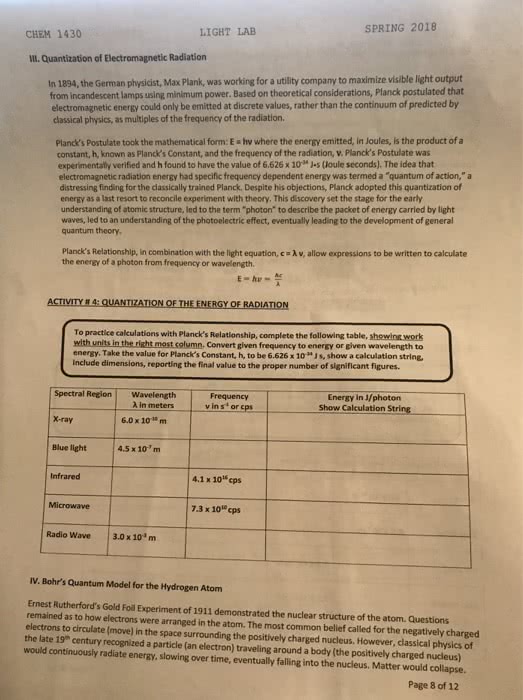CHM135H1 Lecture Notes - Lecture 10: Bohr Model, Pauli Exclusion Principle, Probability Distribution

90
CHM135H1 Full Course Notes
Verified Note
90 documents
Document Summary
Gamma rays, x rays, ultraviolet, visible light, infrared, microwaves, radiowaves (cid:507)from low frequency to high frequency(cid:508) c (cid:507)speed of light(cid:508) = (cid:507)wavelength x frequency(cid:508) Light behaves as a stream of small particles called photons. Calculate energy based on h=(cid:888). (cid:888)(cid:884)(cid:888) (cid:883)(cid:882) (cid:2871)(cid:2872)(cid:1836) , c=(cid:885) (cid:883)(cid:882)(cid:2876)(cid:1865)/ and mutiply e by. Avogadro"s number (cid:507)(cid:888). (cid:882)(cid:884)(cid:884) (cid:883)(cid:882)(cid:2870)(cid:2871)(cid:508), we can get j/mol. The energy of a photon depends only on its frequency or wavelength. The intensity of a light beam (cid:507)number of photons(cid:508) depends on its amplitude: photoelectric effect: Below the threshold value then there will be no electron is ejected. (cid:508) (cid:2870)(cid:2873)(cid:2868) (cid:2869)(cid:2868) (cid:3125)=(cid:883). (cid:884) (cid:883)(cid:882)(cid:2869)(cid:2873) Photon> zinc> sodium: atoms give off light when heated or otherwise energetically excited. Unlike the white light from the sun, the light emitted by atom is not in a continuous distribution of wave lengths but only at a certain specific wavelength, giving a series of discrete lines on a dark background line spectrum.



